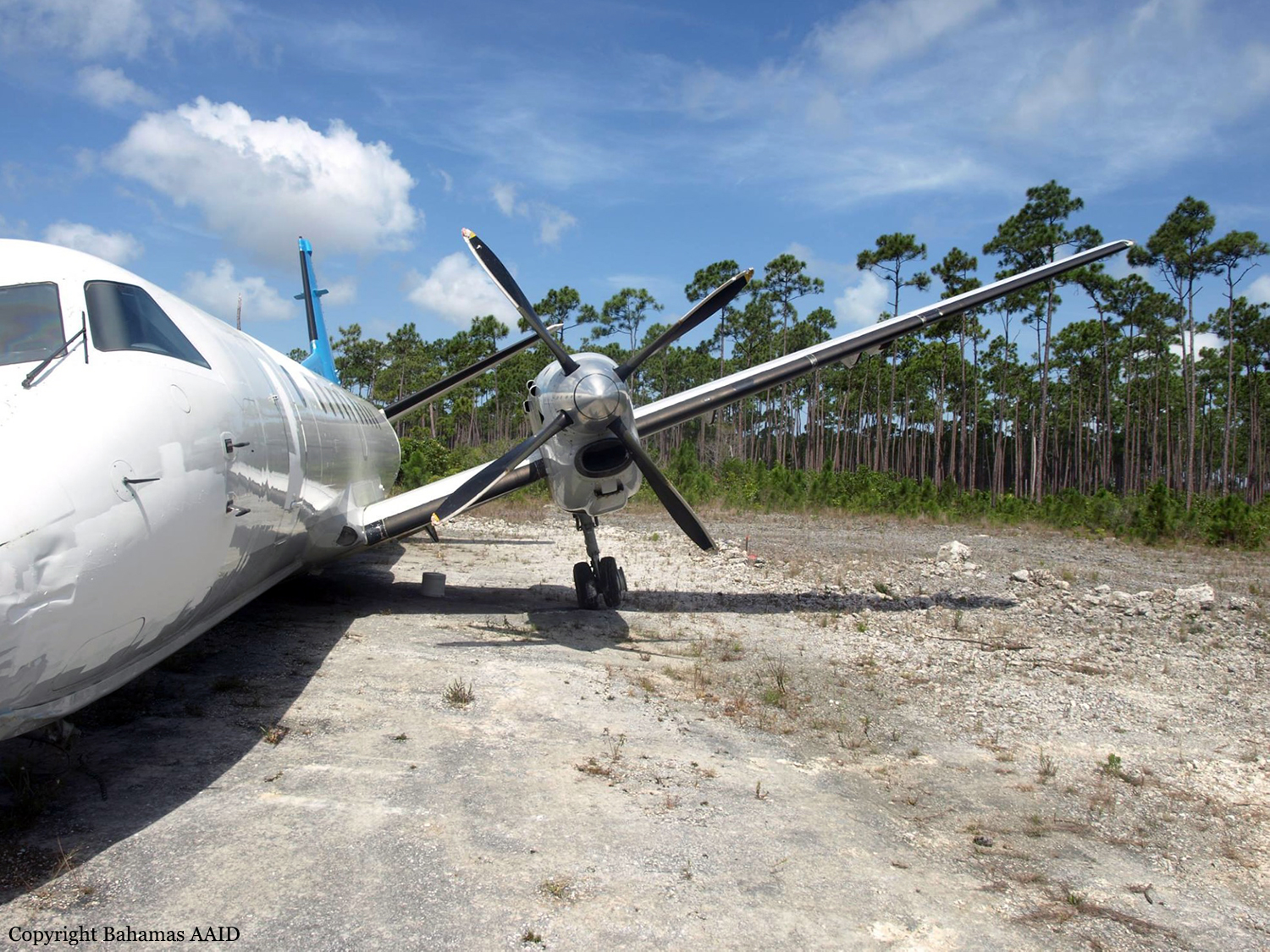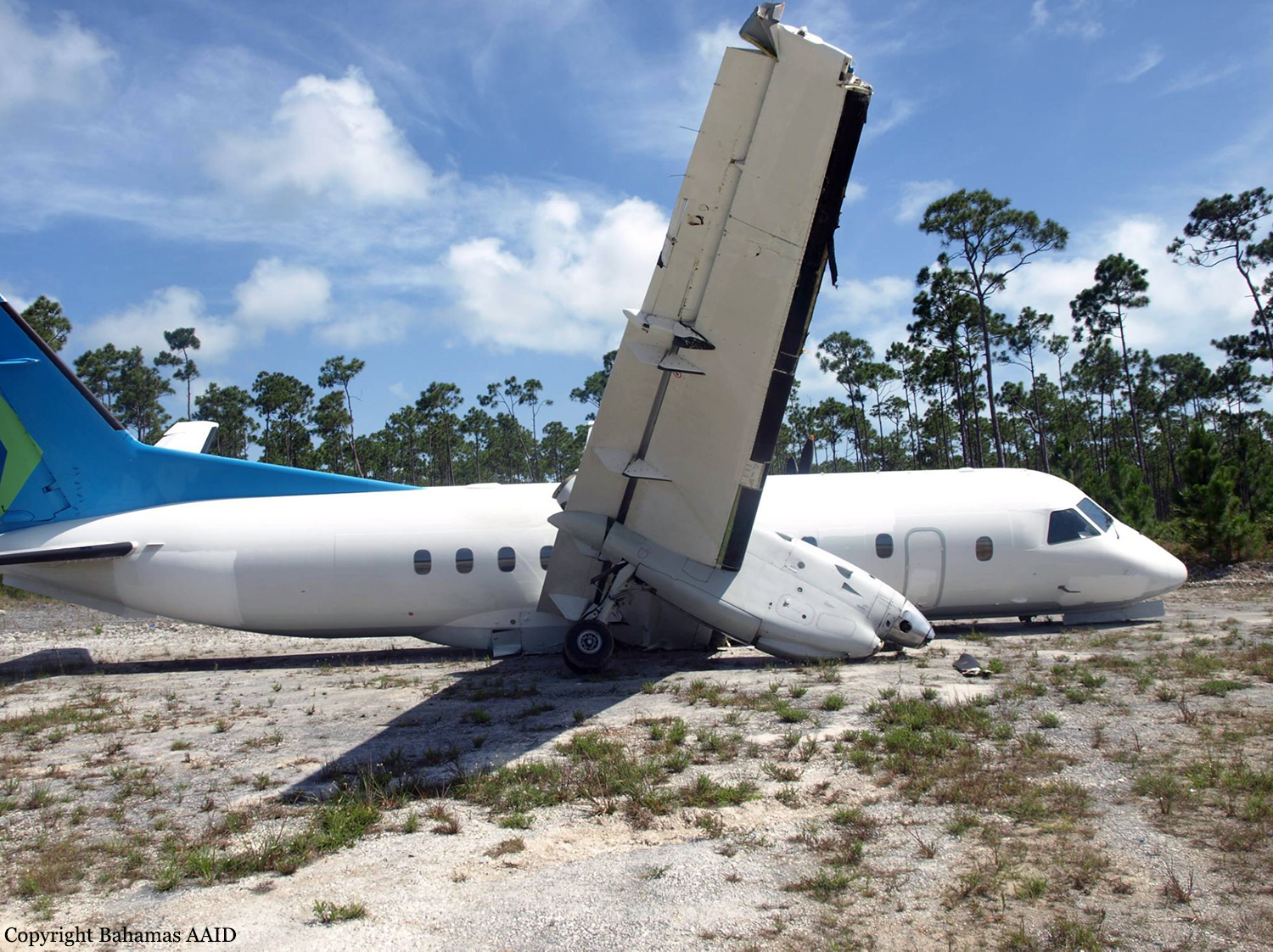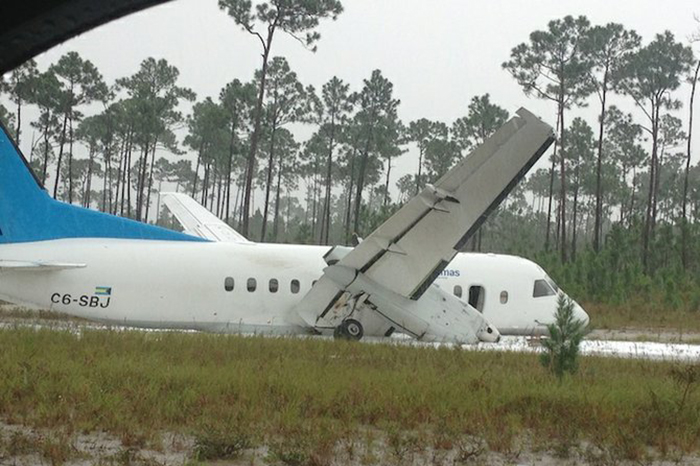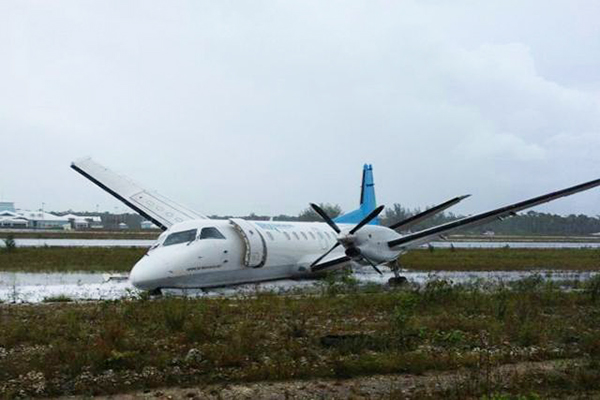Zone
Crash of an Airbus A320-214 in Philadelphia
Date & Time:
Mar 13, 2014 at 1822 LT
Registration:
N113UW
Survivors:
Yes
Schedule:
Philadelphia – Fort Lauderdale
MSN:
1141
YOM:
1999
Flight number:
US1702
Crew on board:
5
Crew fatalities:
Pax on board:
149
Pax fatalities:
Other fatalities:
Total fatalities:
0
Captain / Total hours on type:
4457.00
Copilot / Total hours on type:
4457
Aircraft flight hours:
44230
Circumstances:
Before pushback from the gate, the first officer, who was the pilot monitoring, initialized the flight management computer (FMC) and mistakenly entered the incorrect departure runway (27R instead of the assigned 27L). As the captain taxied onto runway 27L for departure, he noticed that the wrong runway was entered in the FMC. The captain asked the first officer to correct the runway entry in the FMC, which she completed about 27 seconds before the beginning of the takeoff roll; however, she did not enter the FLEX temperature (a reduced takeoff thrust setting) for the newly entered runway or upload the related V-speeds. As a result, the FMC's ability to execute a FLEX power takeoff was invalidated, and V-speeds did not appear on the primary flight display (PFD) or the multipurpose control display unit during the takeoff roll. According to the captain, once the airplane was cleared for takeoff on runway 27L, he set FLEX thrust with the thrust levers, and he felt that the performance and acceleration of the airplane on the takeoff roll was normal. About 2 seconds later, as the airplane reached about 56 knots indicated airspeed (KIAS), cockpit voice recorder (CVR) data indicate that the flight crew received a single level two caution chime and an electronic centralized aircraft monitoring (ECAM) message indicating that the thrust was not set correctly. The first officer called "engine thrust levers not set." According to the operator's pilot handbook, in response to an "engine thrust levers not set" ECAM message, the thrust levers should be moved to the takeoff/go-around (TO/GA) detent. However, the captain responded by saying "they're set" and moving the thrust levers from the FLEX position to the CL (climb) detent then back to the FLEX position. As the airplane continued to accelerate, the first officer did not make a callout at 80 KIAS, as required by the operator's standard operating procedures (SOPs). As the airplane reached 86 KIAS, the automated RETARD aural alert sounded and continued until the end of the CVR recording. According to Airbus, the RETARD alert is designed to occur at 20 ft radio altitude on landing and advise the pilot to reduce the thrust levers to idle. The captain later reported that he had never heard an aural RETARD alert on takeoff, only knew of it on landing, and did not know what it was telling him. He further said that when the RETARD aural alert sounded, he did not plan to reject the takeoff because they were in a high-speed regime, they had no red warning lights, and there was nothing to suggest that the takeoff should be rejected. The first officer later reported that there were no V-speeds depicted on the PFD and, thus, she could not call V1 or VR during the takeoff. She was not aware of any guidance or procedure that recommended rejecting or continuing a takeoff when there were no V-speeds displayed. She further said she "assumed [the captain] wouldn't continue to takeoff if he did not know the V-speeds." The captain stated that he had recalled the V-speeds as previously briefed from the Taxi checklist, which happened to be the same V-speeds for runway 27L. The captain continued the takeoff roll despite the lack of displayed V-speeds, no callouts from the first officer, and the continued and repeated RETARD aural alert. FDR data show that the airplane rotated at 164 KIAS. However, in a postaccident interview, the captain stated that he "had the perception the aircraft was unsafe to fly" and that he decided "the safest action was not to continue," so he commenced a rejected takeoff. FDR data indicate that the captain reduced the engines to idle and made an airplane-nose-down input as the airplane reached 167 KIAS (well above the V1 speed of 157 KIAS) and achieved a 6.7 degree nose-high attitude. The airplane's pitch decreased until the nose gear contacted the runway. However, the airplane then bounced back into the air and achieved a radio altitude of about 15 ft. Video from airport security cameras show the airplane fully above the runway surface after the bounce. The tail of the airplane then struck the runway surface, followed by the main landing gear then the nose landing gear, resulting in its fracture. The airplane slid to its final resting position on the left side of runway 27L. The operator's SOPs address the conditions under which a rejected takeoff should be performed within both low-speed (below 80 KIAS) and high-speed (between 80 KIAS and V1) regimes but provide no guidance for rejecting a takeoff after V1 and rotation. Simulator testing performed after the accident demonstrated that increasing the thrust levers to the TO/GA detent, as required by SOPs upon the activation of the "thrust not set" ECAM message, would have silenced the RETARD aural alert. At the time of the accident, neither the operator's training program nor manuals provided to flight crews specifically addressed what to do in the event the RETARD alert occurred during takeoff; although, 9 months before the accident, US Airways published a safety article regarding the conditions under which the alert would activate during takeoff. The operator's postaccident actions include a policy change (published via bulletin) to its pilot handbook specifying that moving the thrust levers to the TO/GA detent will cancel the RETARD aural alert. Although simulator testing indicated that the airplane was capable of sustaining flight after liftoff, it is likely that the cascading alerts (the ECAM message and the RETARD alert) and the lack of V-speed callouts eventually led the captain to have a heightened concern for the airplane's state as rotation occurred. FDR data indicate that the captain made erratic pitch inputs after the initial rotation, leading to the nose impacting the runway and the airplane bouncing into the air after the throttle levers had been returned to idle. Airbus simulation of the accident airplane's acceleration, rotation, and pitch response to the cyclic longitudinal inputs demonstrated that the airplane was responding as expected to the control inputs. Collectively, the events before rotation (the incorrect runway programmed in the FMC, the "thrust not set" ECAM message during the takeoff roll, the RETARD alert, and the lack of required V-speeds callouts) should have prompted the flight crew not to proceed with the takeoff roll. The flight crewmembers exhibited a self-induced pressure to continue the takeoff rather than taking the time to ensure the airplane was properly configured. Further, the captain initiated a rejected takeoff after the airplane's speed was beyond V1 and the nosewheel was off the runway when he should have been committed to the takeoff. The flight crewmembers' performance was indicative of poor crew resource management in that they failed to assess their situation when an error was discovered, to request a delayed takeoff, to communicate effectively, and to follow SOPs. Specifically, the captain's decision to abort the takeoff after rotation, the flight crew's failure to verify the correct departure runway before gate departure, and the captain's failure to move the thrust levers to the TO/GA detent in response to the ECAM message were all contrary to the operator's SOPs. Member Weener filed a statement, concurring in part and dissenting in part, that can be found in the public docket for this accident. Chairman Hart, Vice Chairman Dinh-Zarr, and Member Sumwalt joined the statement.
Probable cause:
The captain's decision to reject the takeoff after the airplane had rotated. Contributing to the accident was the flight crew's failure to follow standard operating procedures by not verifying that the airplane's flight management computer was properly configured for takeoff and the captain's failure to perform the correct action in response to the electronic centralized aircraft monitoring alert.
Final Report:

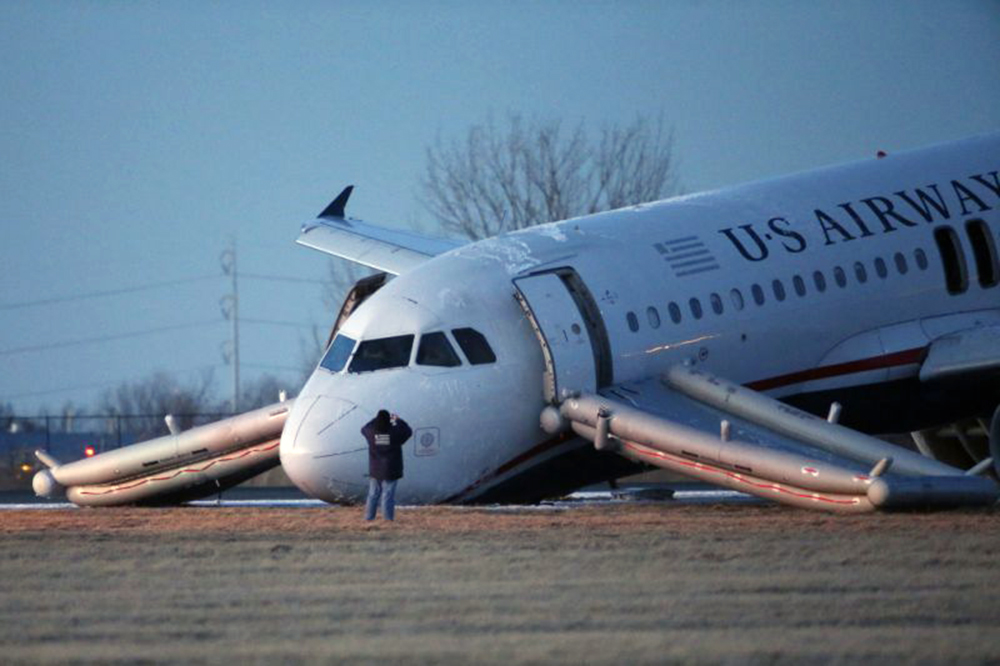
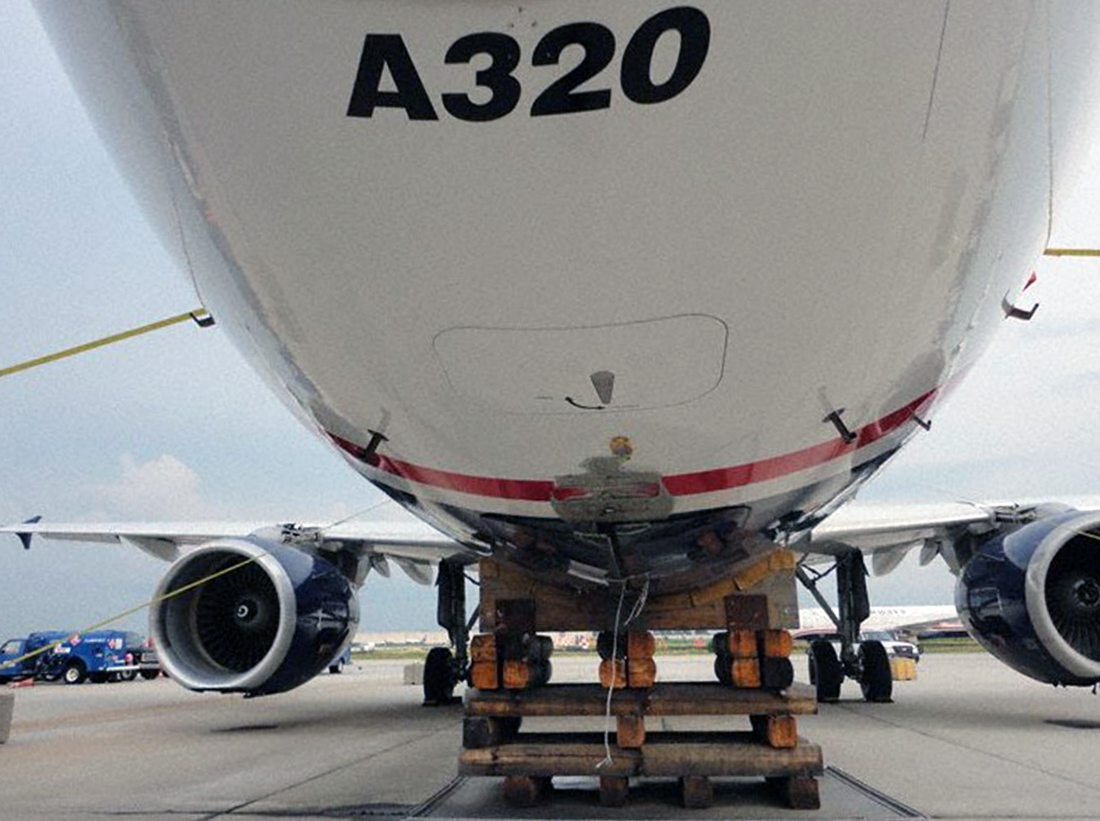


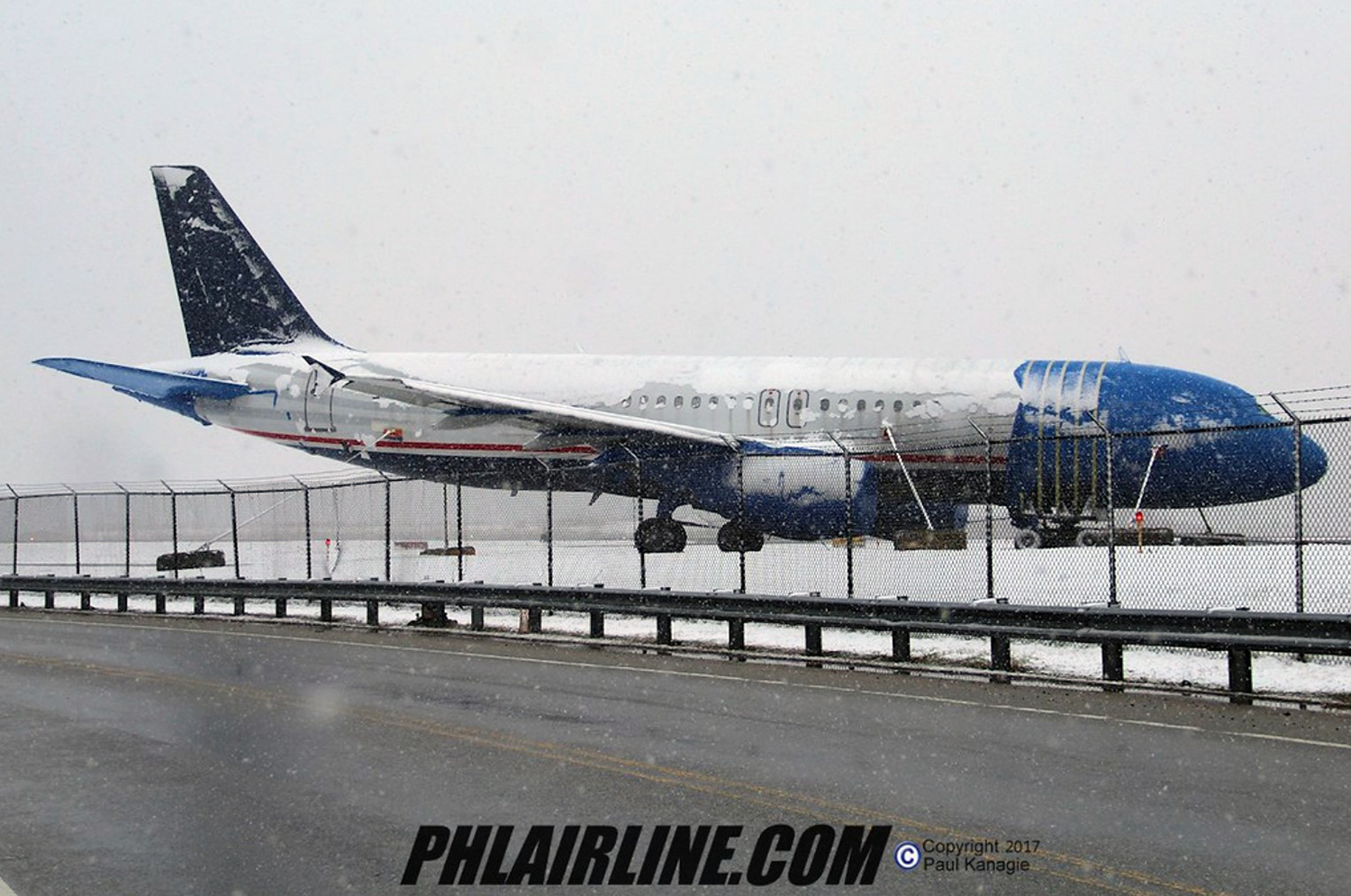
Crash of a Learjet 35A off Fort Lauderdale: 4 killed
Date & Time:
Nov 19, 2013 at 1956 LT
Registration:
XA-USD
Survivors:
No
Schedule:
Fort Lauderdale - Cozumel
MSN:
35A-255
YOM:
1979
Crew on board:
2
Crew fatalities:
Pax on board:
2
Pax fatalities:
Other fatalities:
Total fatalities:
4
Captain / Total hours on type:
1400.00
Copilot / Total hours on type:
175
Aircraft flight hours:
6842
Circumstances:
During takeoff to the east over the ocean, after the twin-engine jet climbed straight ahead to about 2,200 ft and 200 knots groundspeed, the copilot requested radar vectors back to the departure airport due to an "engine failure." The controller assigned an altitude and heading, and the copilot replied, "not possible," and requested a 180-degree turn back to the airport, which the controller acknowledged and approved. However, the airplane continued a gradual left turn to the north as it slowed and descended. The copilot subsequently declared a "mayday" and again requested vectors back to the departure airport. During the next 3 minutes, the copilot requested, received, and acknowledged multiple instructions from the controller to turn left to the southwest to return to the airport. However, the airplane continued its slow left turn and descent to the north. The airplane slowed to 140 knots and descended to 900 ft as it flew northbound, parallel to the shoreline, and away from the airport. Eventually, the airplane tracked in the direction of the airport, but it continued to descend and impacted the ocean about 1 mile offshore. According to conversations recorded on the airplane's cockpit voice recorder (CVR), no checklists were called for, offered, or used by either flight crewmember during normal operations (before or during engine start, taxi, and takeoff) or following the announced in-flight emergency. After the "engine failure" was declared to the air traffic controller, the pilot asked the copilot for unspecified "help" because he did not "know what's going on," and he could not identify the emergency or direct the copilot in any way with regard to managing or responding to the emergency. At no time did the copilot identify or verify a specific emergency or malfunction, and he did not provide any guidance or assistance to the pilot. Examination of the recovered wreckage revealed damage to the left engine's thrust reverser components, including separation of the lower blocker door, and the stretched filament of the left engine's thrust reverser "UNLOCK" status light, which indicated that the light bulb was illuminated at the time of the airplane's impact. Such evidence demonstrated that the left engine's thrust reverser became unlocked and deployed (at least partially and possibly fully) in flight. Impact damage precluded testing for electrical, pneumatic, and mechanical continuity of the thrust reverser system, and the reason the left thrust reverser deployed in flight could not be determined. No previous instances of the inflight deployment of a thrust reverser on this make and model airplane have been documented. The airplane's flight manual supplement for the thrust reverser system contained emergency procedures for responding to the inadvertent deployment of a thrust reverser during takeoff. For a deployment occurring above V1 (takeoff safety speed), the procedure included maintaining control of the airplane, placing the thrust reverser rocker switch in the "EMER STOW" position, performing an engine shutdown, and then performing a single-engine landing. Based on the wreckage evidence and data recovered from the left engine's digital electronic engine control (DEEC), the thrust reverser rocker switch was not placed in the "EMER STOW" position, and the left engine was not shut down. The DEEC data showed a reduction in N1 about 100 seconds after takeoff followed by a rise in N1 about 35 seconds later. The data were consistent with the thrust reverser deploying in flight (resulting in the reduction in N1) followed by the inflight separation of the lower blocker door (resulting in the rise in N1 as some direct exhaust flow was restored). Further, the DEEC data revealed full engine power application throughout the flight. Although neither flight crewmember recognized that the problem was an inflight deployment of the left thrust reverser, certification flight test data indicated that the airplane would have been controllable as it was configured on the accident flight. If the crew had applied the "engine failure" emergency procedure (the perceived problem that the copilot reported to the air traffic controller), the airplane would have been more easily controlled and could have been successfully landed. The airplane required two fully-qualified flight crewmembers; however, the copilot was not qualified to act as second-in-command on the airplane, and he provided no meaningful assistance to the pilot in handling the emergency. Further, although the pilot's records indicated considerable experience in similar model airplanes, the pilot's performance during the flight was highly deficient. Based on the CVR transcript, the pilot did not adhere to industry best practices involving the execution of checklists during normal operations, was unprepared to identify and handle the emergency, did not refer to the appropriate procedures checklists to properly configure and control the airplane once a problem was detected, and did not direct the copilot to the appropriate checklists.
Probable cause:
The pilot's failure to maintain control of the airplane following an inflight deployment of the left engine thrust reverser. Contributing to the accident was the flight crew's failure to perform the appropriate emergency procedures, the copilot's lack of qualification and capability to act as a required flight crewmember for the flight, and the inflight deployment of the left engine thrust reverser for reasons that could not be determined through postaccident investigation.
Final Report:
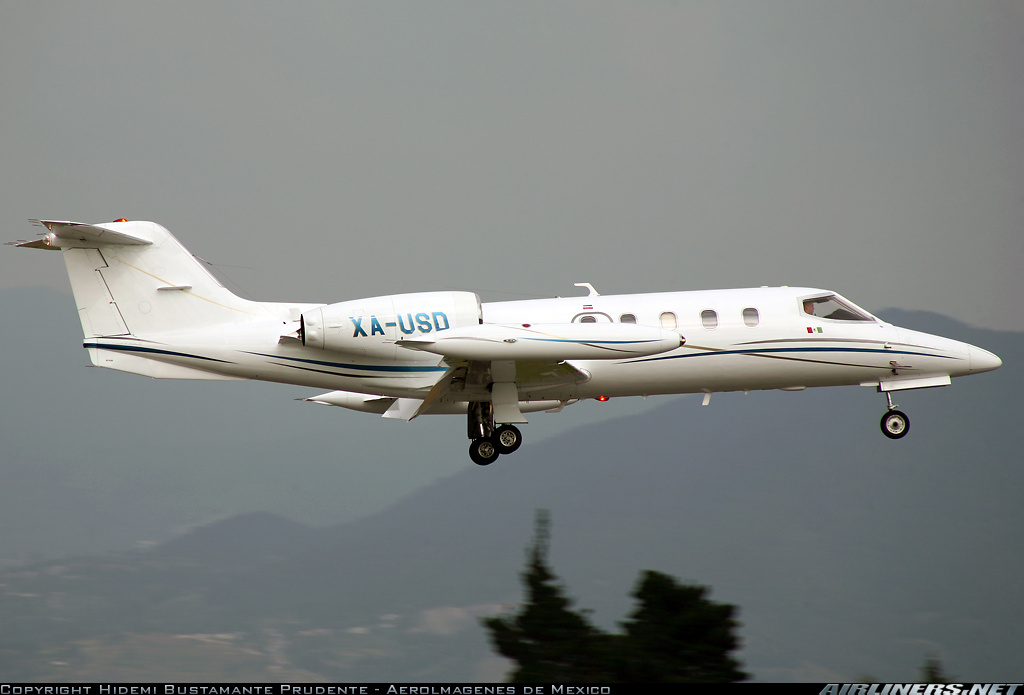


Crash of a Saab 340 in Marsh Harbour
Date & Time:
Jun 13, 2013 at 1345 LT
Registration:
C6-SBJ
Survivors:
Yes
Schedule:
Fort Lauderdale – Marsh Harbour
MSN:
316
YOM:
1992
Flight number:
SBM9561
Crew on board:
3
Crew fatalities:
Pax on board:
21
Pax fatalities:
Other fatalities:
Total fatalities:
0
Captain / Total hours on type:
4700.00
Aircraft flight hours:
45680
Aircraft flight cycles:
49060
Circumstances:
On Thursday June 13, 2013 at approximately 1750UTC (1:50pm local time), a fixed wing, twin turboprop regional airliner, was involved in an accident as a result of a runway excursion while landing during heavy rain showers at Marsh Harbor Int’l Airport, Marsh Harbor, Abaco, Bahamas. The aircraft, a SAAB 340B aircraft was operated by SkyBahamas Airlines and bore Bahamas registration C6-SBJ, serial number 316. C6-SBJ departed Fort Lauderdale Int’l Airport (KFLL), Fort Lauderdale, Florida in the USA as Tropical Sky 9561. The airline, SkyBahamas Airline is a Bahamas Air Operator Certificate Holder with approved scheduled operations to and from Fort Lauderdale International Airport, Florida USA (KFLL) and Marsh Harbor Int’l Airport, Marsh Harbor, Abaco in the Bahamas. The crew received weather information and IFR route clearance from KFLL Control Tower. This passenger carrying flight departed KFLL at 1706UTC (1:06pm local) on an instrument flight rules (IFR) flight plan. The point of intended landing was Marsh Harbor International Airport, Abaco, Bahamas (MYAM). The crew selected runway 09 at MYAM for landing. At 17:45:30, the aircraft leveled off at 1,500 feet ASL on a heading of 096 degrees magnetic, with airspeed of 236 knots indicated (KIAS). The flaps were extended to 15 degrees at 17:47:18 with the aircraft level at 1,300 feet ASL, approximately 4.2 nm on the approach. The autopilot was disconnected at 17:47:26 with the aircraft level at 1,300 feet ASL, approximately 3.8 nm on the approach. Heading was 097 degrees magnetic and airspeed was 166 KIAS. The Landing Gear was extended and in the down and locked position by 17:48:01 as the aircraft descended through 730 feet ASL. At 17:48:03, the flaps were extended to landing flap 20 degrees with the aircraft approximately 1.9 nm from the runway on the approach. At 17:48:47, as the aircraft approached the threshold, the power levers were retarded (from 52 degrees) and the engine torques decreased from approximately 20%. Approximately one second later, the aircraft crossed the threshold at a radio altitude of 50 feet AGL on a heading 098 degrees magnetic and airspeed of 171 KIAS. The crew encountered rain showers and a reduction in visibility. The aircraft initially touched down at 17:49:02 with a recorded vertical load factor of +2.16G, approximately 14 seconds after crossing the threshold. There were no indications on the runway to indicate where the initial touchdown had occurred. Upon initial landing however, the aircraft bounced and became airborne, reaching a calculated maximum height of approximately 15 feet AGL. The aircraft bounced a second time at 17:49:07 with a recorded vertical load factor of +3.19* G. During this second bounce, the pitch attitude was 1.8 degrees nose down, heading 102 degrees magnetic and airspeed 106 KIAS. The aircraft made consecutive contact with the runway approximately three times. The third and final bounce occurred at 17:49:14 with a recorded vertical load factor of +3.66G*. During the third bounce, the pitch attitude was 2.2 degrees nose down, heading 099 degrees magnetic and airspeed 98 KIAS. As a result of the hard touchdown, damage was sustained to the right wing and right hand engine/propeller. The right hand engine parameters recorded a rapid loss of power with decreasing engine speed and torque, and subsequent propeller stoppage. The aircraft veered off to the right at approximate time of 17:49:20 on a heading of 131 degrees magnetic at a point approximately 6,044 feet from the threshold of runway 09. The recorded airspeed was 44 KIAS with the left hand engine torque at 26 % and the right hand engine torque at 0%. The aircraft came to a full stop at approximate time 17:49:25 on a heading of 231 degrees magnetic. When the aircraft came to a stop, the flight and cabin crew and twenty-one (21) passengers evacuated the aircraft. The evacuation was uneventful using the main entrance door. Due to the damage sustained by the right wing and engine, evacuation on the right side was not considered. The evacuation occurred during heavy rainfall. No injuries were reported as a result of the accident or evacuation process. The airplane sustained substantial damage as a result of the impact sequence. The elevation of the accident site was reported as approximately 10 feet Mean Sea Level (MSL). Instrument Meteorological Conditions (IMC) prevailed at the time of the accident. The cockpit voice recorder (CVR) uncovered that this crew used no crew resource management or adherence to company standard operating procedures. During the final seconds of the flight, there was complete confusion on the flight deck as to who was in control of the aircraft. After failure of the windshield wiper on the left side of the aircraft, the captain continued to maneuver the aircraft despite having no visual contact of the field due to heavy rain. Sterile Cockpit procedures were not adhered to by this crew as they continued with non-essential conversation throughout the flight regime from engine start up in KFLL up until the “before landing checklist” was requested prior to landing.
Probable cause:
Contributing factors:
- Inexperienced and undisciplined crew,
- Lack of crew resource management training,
- Failure to follow company standard operating procedures,
- Condition known as “get-home-itis” where attempt is made to continue a flight at any cost, even if it means putting aircraft and persons at risk in order to do so,
- Failure to retrieve, observe and respect weather conditions,
- Thunderstorms at the airfield.
- Inexperienced and undisciplined crew,
- Lack of crew resource management training,
- Failure to follow company standard operating procedures,
- Condition known as “get-home-itis” where attempt is made to continue a flight at any cost, even if it means putting aircraft and persons at risk in order to do so,
- Failure to retrieve, observe and respect weather conditions,
- Thunderstorms at the airfield.
Final Report:

